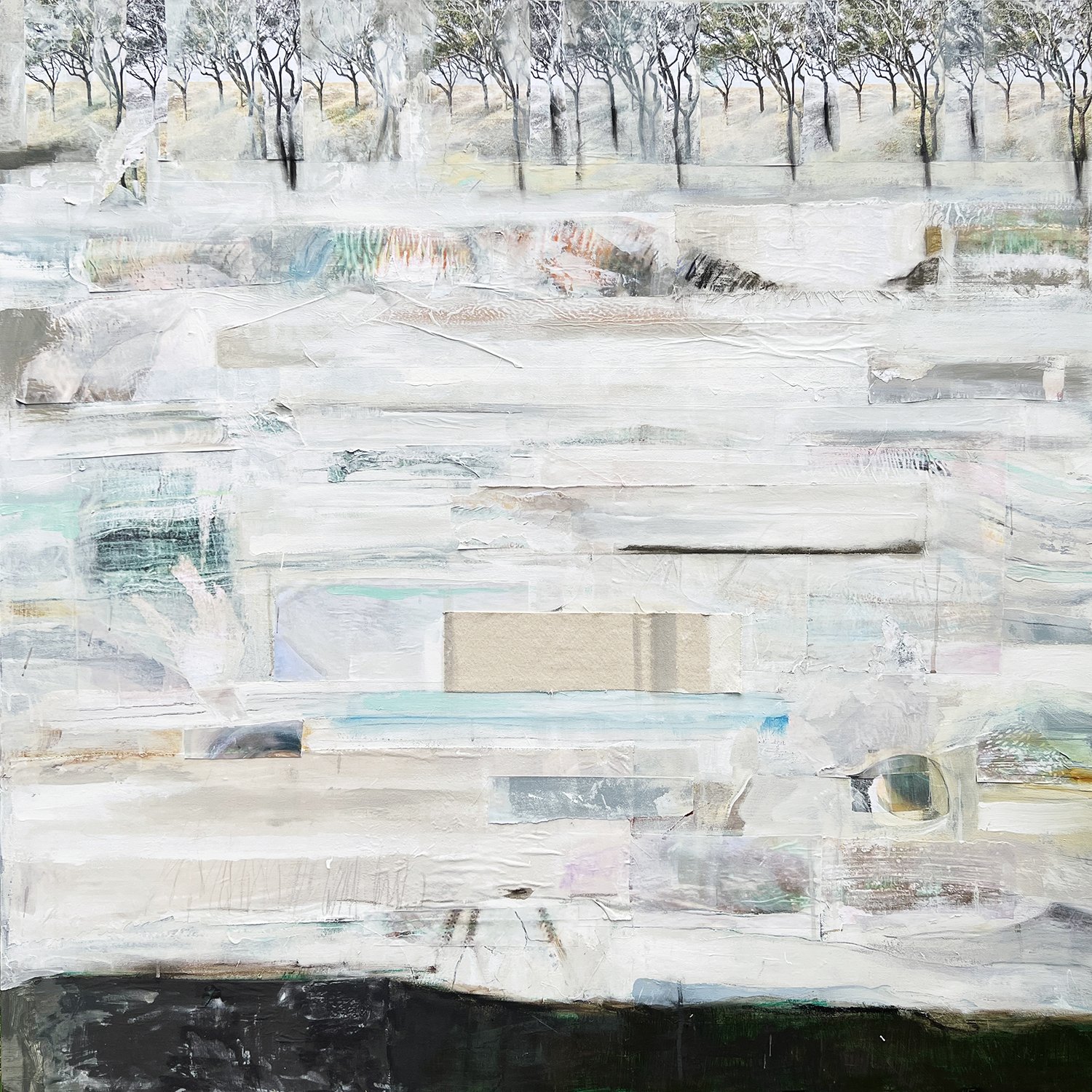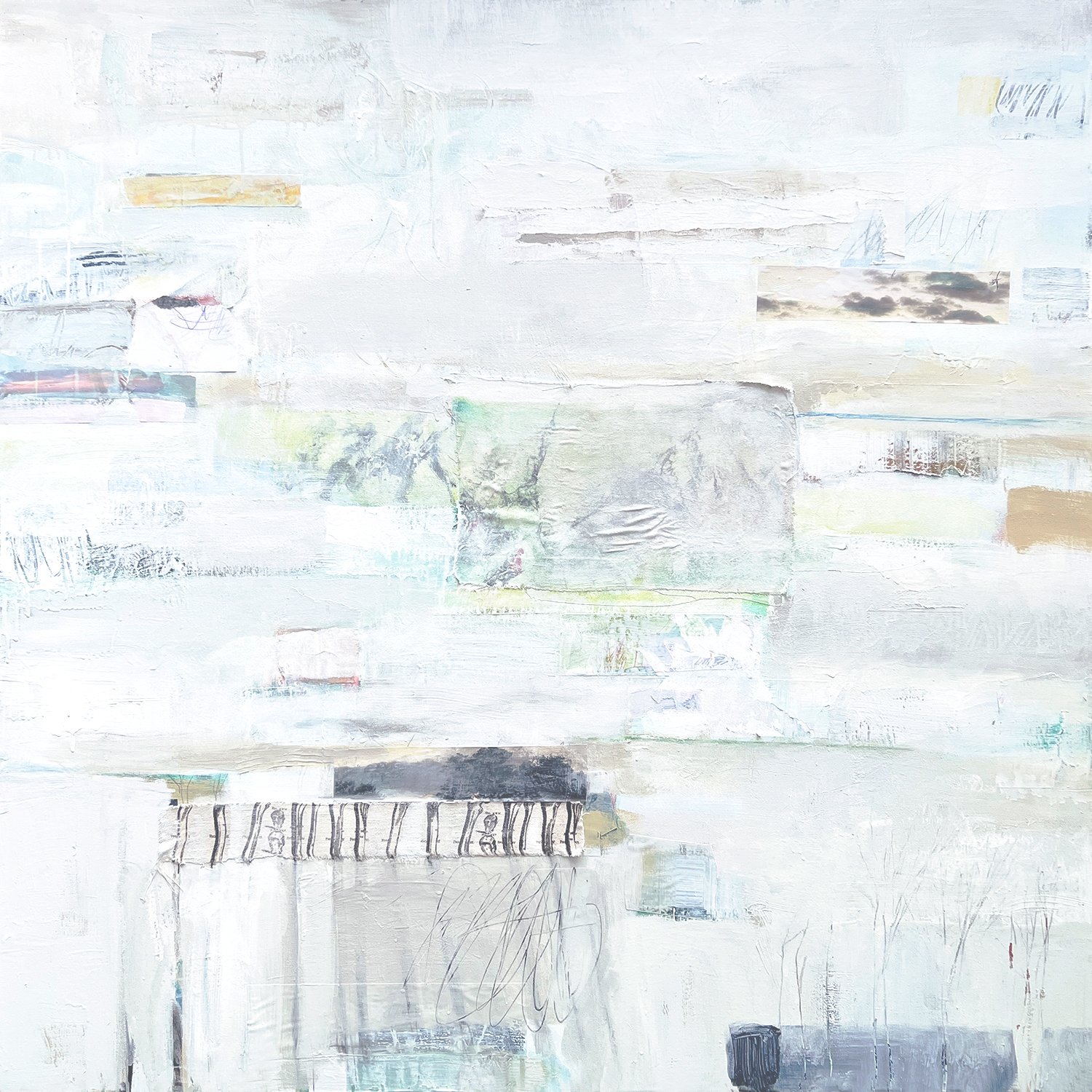Interview
Marlowe Emerson
Marlowe Emerson is a visual artist whose work explores cycles and patterns in nature and the wisdom they reveal. Her process is informed by her Native American family history and childhood memories of using art as a way of communicating with nature. Gathering and combining imagery in a variety of media, she creates layers of meaning and personal narrative that speak to our symbiotic relationship with the natural world. Emerson holds a degree in French and Art History from Georgetown University and spent a decade studying painting in the south of France. Her work has been exhibited internationally, including the Art in Embassies program. She currently works out of her home studio in Virginia Beach, Virginia.
What is your background and how did you start your journey in the art world?
“I moved to France after college, and it was there that I made the decision to pursue art. I was lucky enough to live in Mougins, the village where Picasso spent his last years, and to be surrounded by incredible art, lots of creative people, and the stunning landscape and light of the Alpes-Maritimes region. This was an important time in my life that allowed me to explore who I was as an artist. I discovered that my work was rooted in the things I learned as a child growing up at the beach - my mother’s nature ceremonies on the beach, and the love of the ocean instilled in me by father, an east coast surfboard shaper. I eventually moved back to the U.S., returning to my home in Virginia Beach, where I could explore these themes immersed in the ocean and forest environments where I grew up.”
What inspires you?
“Nature is the ultimate art teacher and source of inspiration. When we experience moments of intense beauty and connection in everyday life, just looking at the colors of the sky or patterns made by ripples in the water, these are the moments when nature reveals truth to us. I am fascinated by these instances of transcendence and what they have to teach us. I always feel that if I can take that moment and continue to study it through art, I can unlock the secrets that it holds. This is the curiosity that drives my work.”
What themes do you pursue? Is there an underlying message in your work?
“My work explores connections between art, nature, and mindfulness. It is a way of trying to understand a basic human problem. The fact that our existence is so obviously and intimately connected to the planet, our environments, and our communities, yet we still walk around with this feeling of being separate from everything. It is this feeling of separateness, of viewing the natural world as a collection of random objects to be manipulated instead of an extension of ourselves, that has led us to so much destruction of life and the vital ecosystems of our planet. On an individual level, we owe it to ourselves to try to heal this broken connection with nature. Art can be really useful here. It can be a transformative mindfulness exercise and technique for going beyond language to experience states of flow and oneness. It also provides a way to study nature in a way that is personal and intuitive. My work is the product of experimenting with these ideas.”
“My work explores connections between art, nature, and mindfulness.”
How would you describe your work?
“I make abstract, mixed media works on canvas that bring fragments of daily life into dialog with images from nature, hoping to reveal something about our relationship with nature that might not be knowable through words. I like to work with textures and images that are either heavy and thick or light and airy and work with density and open space to reflect how we experience the earthly and the ethereal, the physical and the spiritual.”
Which artists influence you most?
“I am inspired by artists whose work is an interplay with nature, like Andy Goldsworthy or Gregory Colbert. I also love female pioneers of abstract expressionism, like Helen Frankenthaler and Joan Mitchell. I think my work is an attempt to combine these types of processes in search of something new.”
What is your creative process like?
“I am really doing the same thing I did during long days on the beach as a kid. I take walks, hunting for tiny details of nature that speak to me in some way, only now I gather them with a camera instead of a bucket. Then I work with the images digitally to enhance them or look for ways to bring out the qualities I am excited about. In the studio, I work as spontaneously and intuitively as possible to combine these images on the canvas with paint and various other materials, including paper and fabric that are pieces of my daily life. I try to allow the images to tell me what needs to happen and what I need to know.”
What is an artist’s role in society and how do you see that evolving?
“The purpose of the artist is to celebrate the mystery of human creativity. In all cultures, the artist has stood between the worlds of form and imagination to offer new perspectives on reality. I see this role as no longer belonging to a chosen few, but that it is becoming more and more important for each of us to practice and express our own art. In a world transformed by AI, amplifying our artistic qualities, our messy unpredictability and connection with the unseen, will become our greatest responsibility. These talents will be needed not just for making art, but in all aspects of life. This is what I am fascinated with teaching and writing about - making art not as an end in itself, but as a way to practice and develop our imaginative and intuitive capacities.”
Have you had any noteworthy exhibitions you'd like to share?
“I am currently working on a popup solo exhibition for March 2024, EQUINOX: Cycles and Ceremonies. This will bring together my work in painting, mixed media, and video to show common themes around the wisdom of nature.”






